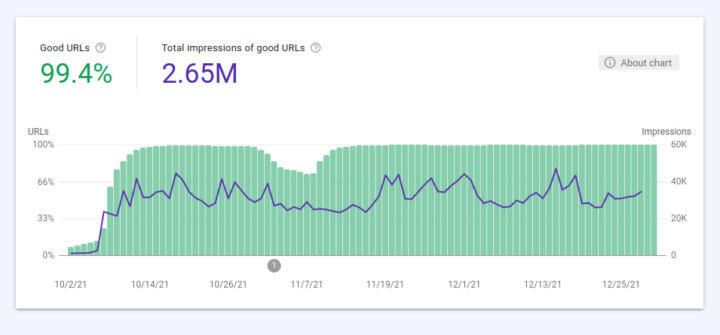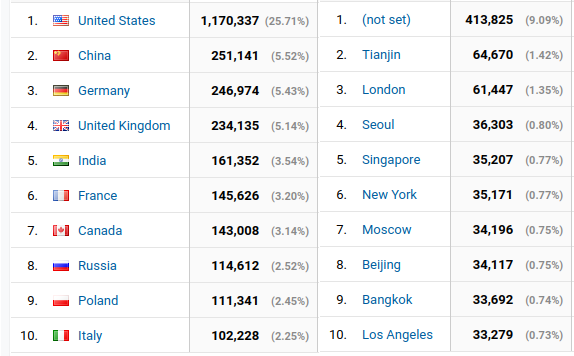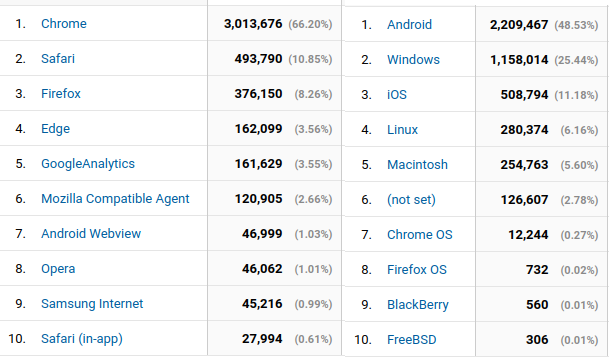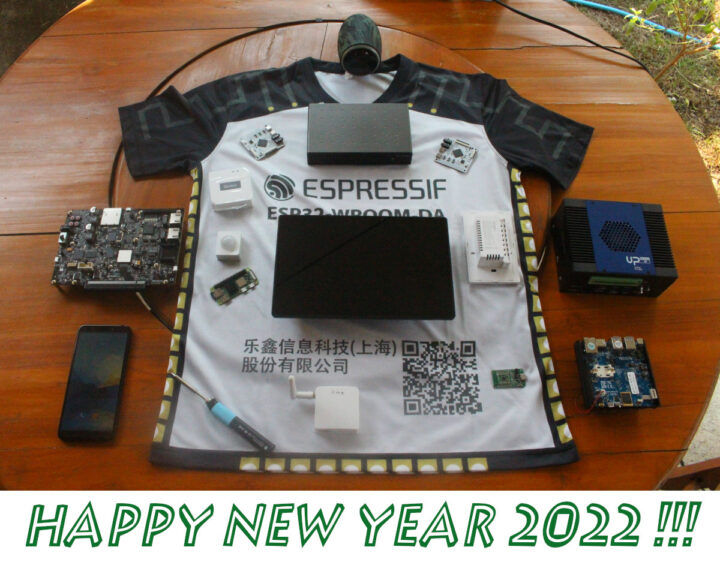As per tradition, we’ll look back at what happened during the year in the last post, and see what 2022 may have in store, plus the usual statistics from CNX Software website.
The biggest story of 2021 has to be the worsening of semiconductors shortages with extremely long lead times, prices of some components going up multiple folds, constant complaints on Twitter about availability and prices. I think I even saw a website, hopefully misconfigured, showing an estimated availability of a specific STM32 MCU in 2037. This also gave rise to opportunities and board redesigns, with MotorComm Ethernet chips replacing some Realtek chips in SBCs such as NanoPi R2C and Orange Pi R1S Plus LTS, and CH9102F showing up as a replacement for CP2104 in some IoT boards.
We also got some interesting Arm processors, but sadly the high-expected Rockchip RK3588 got delayed by another year, although it’s getting really close with the first board expected in H1 2022. I promise! The company still introduced the RK3566 and RK3568 quad-core Cortex-A55 processors with plenty of I/O for AIoT use cases. There was less to announce on Amlogic side with S908X processor still being very elusive (or has it been canceled?), but we still got news of Amlogic A311D2 octa-core Cortex-A73/A53processor be found next year in the upcoming Khadas VIM4 single board computer. Allwinner hasn’t released any really interesting processors in the last couple of years, and 2021 was not different.
Instead, the most exciting announcement from Allwinner was their RISC-V processor namely Allwinner D1 and D1s/F133, the first affordable RISC-V Linux processors found in boards such as Nezha and Lichee RV. In other RISC-V news, higher-end RISC-V cores were announced like the StarFive Dubhe (Cortex-A75 like) and SiFive Performance P650 (Cortex-A77 like) and should start to be found in new SoCs in 2022 or 2023. Espressif launched the ESP32-C3 WiFi & BLE SoC, announced the ESP32-H2 with BLE 5.2, ZIgbee and Thread connectivity, and we got announcements for a wider variety of RISC-V microcontroller or processors for televisions, the automotive market, the Smart Home with more Bluetooth LE 5.3 and Zigbee MCU, as well as artificial intelligence, and more.
In the x86 world, Intel was busy as well announcing a range of low-power and/or embedded families with Tiger Lake, Tiger Lake-H Xeon, Jasper Lake, and Elhart Lake. You’ll find some of those processors tested in Ian’s mini PC reviews. The company also introduced the Alder Lake family of hybrid processors, but so far mostly for desktop PCs and gaming rigs which are out of the scope of this blog. Low-power Alder Lake processors are expected next year. AMD is focusing on the higher end of the market, no new embedded processors followed after Ryzen Embedded V2000 introduction in the fall of 2020. On the consumer side of the market, AMD introduced the Ryzen 5000U family of 15W mobile processors.
2021 brought us fewer single board computers with some of the highlights of the year being the Raspberry Pi Zero 2 W, Radxa Zero, LattePanda 3 Delta, BeagleV StarFive (a RISC-V SBC that is sadly not being mass-produced), ROCK 3A (RK3566), Allwinner/Sipeed Nezha RISC-V Linux SBC. and Pine64 Quartz64. Other popular hobbyist-grade single board computer companies like Orange Pi (Shenzhen Xunlong Software) and FriendlyELEC mostly launched updates to their existing boards, and Hardkernel basically gave 2021 a pass, with some accessories and focusing on software support such as the release of Ubuntu 21.10 for ODROID-N2+ with open-source Panfrost drivers.
The Raspberry Pi Pico and associated RP2040 microcontroller were also highlights of the year 2021. The board and microcontroller themselves did not bring much else new to the market technically-wise, but the “Raspberry Pi” name and large community meant more people got introduced to microcontrollers, and many new third-party projects were launched based on Raspberry Pi RP2040 as well. Espressif continued its progression notably with ESP32-C3 modules and boards becoming available, announcing ESP32-H2 Zigbee MCU, a dual antenna design, ESP32-C6 with WiFI 6 and Bluetooth 5.0, ESP32-S3 with AI instructions, etc…
LoRaWAN and NB-IoT are still the dominant players in the LPWAN market. 802.11ah HaLow got some positive news at the end of the year, but it looks like it will be used for higher bitrate long-range communication like IP cameras rather than compete directly against LoRaWAN. Another standard that is getting some traction is UWB (Ultra-wideband) mostly for indoor positioning, but it has other use cases like proximity detection and data transmission and some industry experts expect it to become as ubuquious as Bluetooth in consumer devices in the years ahead.
Top Ten Posts of 2021
Let’s check Google Analytics data to find out which posts published in 2021 were the most popular using pageviews as a metric. Here are the top ten posts of the year in reverse order:
- A closer look at Raspberry Pi RP2040 Programmable IOs (PIO) (January 2021) – While Raspberry Pi RP2040 is mostly like your typical microcontroller, it had one feature not found in most: Programmable IOs (PIO). We looked at the implementation, what was possible, and how to get started.
- AMD Ryzen Embedded V2000 mini-STX SBC to power gaming machines, digital signage, PoS… (January 2021) – Sapphire FS-FP6 is a mini-STX SBC based on AMD Ryzen Embedded V2000 designed for business use cases like (casino) gaming machines, digital signage, point-of-sales, and so on.
- CaribouLite RPi HAT open-source SDR Raspberry Pi HAT tunes up to 6 GHz (Crowdfunding) (November 2021) – Raspberry Pi accessories can be popular, and that was the case for this software-defined radio HAT
- Rock Pi X Review – An Atom x5 SBC running Windows 10 or Ubuntu 20.04 (January 2021) – What’s not to like in a low-cost x86 board with Raspberry Pi form factor that can run either Windows 10 or Ubuntu 20.04? There were actually some technical issues but the post still got popular in spite/because of that.
- Linux 5.0 shown to boot on ESP32 processor (July 2021) – ESP32 microcontroller is mostly designed for WiFi and Bluetooth Smart Home products, but somebody managed to run Linux on it. Even though the practical implications are limited to nil, that was still impressive.
- DIY Raspberry Pi 4 mini server includes UPS and OLED information display (July 2021) – For some reason, networked storage devices based on Raspberry Pi hardware are often popular, despite being not optimal for this use case. But this DIY design looks especially neat, so hard to resist I suppose.
- Build a Raspberry Pi CM4 4-Bay NAS with Wiretrustee Carrier board (February 2021) – Did I just say Raspberry Pi-based NAS can be popular? Here’s another one with Wiretrustee carrier board for Raspberry Pi CM4. It did not end up being manufactured because of supply issues, but the design is now open-source hardware.
- Save the planet! Program in C, avoid Python, Perl (November 2021) – I had a lot of fun writing this post with a controversial title about a study showing C was the most efficient language compared to higher-level languages. Some people took some of my statements quite seriously though, and it also got a fair amount of traffic from various sources…
- Watchy Pebble-like Smartwatch with E-paper display, ESP32 processor launched on Crowd Supply (February 2021) – Pebble was a popular smartwatch a few years ago, but the company eventually had to fold. Watchy looks similar, with an E-Ink display, but based on an ESP32 processor.
- AmpliPi – A Raspberry Pi-based whole-house audio amplifier (Crowdfunding) (February 2021) – I’m not sure what happened here, but for some reason, a Raspberry Pi-based audio amplifier was the most popular of 2021 on CNX Software.
In 2020, I had three Raspberry Pi enclosures in the top ten. Those are gone in 2021, yet many of the most popular articles are about Raspberry Pi, with ESP32 joining the fun as well.
Website updates
I never had this section in previous years. But I spent a significant portion of my time working on the website in 2021. First, we launched CNX Sofware China in collaboration with Rakwireless who translates two to four articles a day into Chinese and shares the articles in Chinese social networks. I also launched a Thai version of the website with about 20 to 30 articles translated per month. The Chinese version is basically on autopilot, and I have close to nothing to do, but I spend a bit more time on the Thai website, and I’m aware we have to improve the quality of the translation which hopefully will happen with experience and time. If traffic picks up, we’ll probably translate/post 3 articles a day for the latter. I also have a Spanish version, which I’ve never talked about publicly until now, because I use Google Translate for 12-15 articles a month, and it also serves as a test website. Maybe it will become a proper website in a few years if time and funds permit.
I also worked on fewer reviews this year, because I spend a lot of time trying to optimize the website to make Google happy, since Google Search traffic had dropped by 60% since January 2020, only compensated partially by an increase from other sources. One change was to make the website responsive. I used to have separate websites for desktop, mobile and AMP, but this is now fully unified. This has been possible thanks to the launch of the Chinese website, as Rakwireless wanted to have it responsive, so I used the work on the Chinese (thanks Roy!) on the English version. I also worked on improving Web Core Vitals fixing LCP and CLS issues and more… If you don’t know those terms, lucky you. Other optimization included W3C validations, some security warnings… I estimate working over 200 hours on improving the website, including the speed.
 This results in a much improved mobile “page experience” based on Google metrics, and I’ve got more A’s in WebPageTest…
This results in a much improved mobile “page experience” based on Google metrics, and I’ve got more A’s in WebPageTest…
Traffic went up a bit as well since the changes, but it’s close to impossible to know if it’s related to the changes. I did notice a small pick-up in hits from Google Search, so it must have been an effect, although not dramatic.
CNX Software 2021 Stats
We published 901 posts including that one in 2021 against 922 in 2020. The lower count is probably reflected in the time I spent on Thai and Spanish websites, although I’ve stopped working on the Jobs website and removed the Events section of the website for optimization and have more time. Or I’m just getting old 🙂
Let’s go back to Google Analytics to check the top countries and cities…
The United States is still at the top with 25.71% but that’s a lower share than in 2020 with 32%, although about the same as in 2019. China moved in second position ahead of Germany and the United Kingdom. India represented 5% of the traffic last year, but it went down to only 3.54%. Other countries are about the same except Australis is out of the top ten replaced by Poland. Unless CNX Software has a huge fan club in Tianjin, part of the Chinese traffic is likely to be “fake”, since it’s now the top city by a wide margin. It’s more likely the top cities are London, Seoul, and Singapore. Chicago was the top city last year with about 6% of the traffic and is now completely gone. It looks like some of the data from Google Analytics is not to be trusted…
Google Chrome continued to increase its market share, but not in a dramatic way from 65.88% to 66.20%, but Safari went into second position with 10.85%, while Firefox dropped to third with 8.26% instead of 8.74% last year. I’m not sure why “GoogleAnalytics” registers at all. Android OS remained at the top and increased its share, Windows dropped from 32.37% to 25.44%, while iOS and Linux gains to 11.18% and 6.16% respectively.
 Mobile traffic surpassed desktop traffic for the first time in 2020, and the trend continues in 2021 with mobile traffic now representing 56.21%.
Mobile traffic surpassed desktop traffic for the first time in 2020, and the trend continues in 2021 with mobile traffic now representing 56.21%.
Looking ahead to 2022
2022 should be an exciting year with Rockchip RK3588 boards like Radxa ROCK5 and an unnamed Pine64 model expected soon. Amlogic A311D2 based Khadas VIM4 should be interesting too with 8GB RAM, a faster GPU, WiFi 6 and more. Let’s not forget Linux RISC-V SBC like the VisionFive V1 and a new board part of the BeagleV family. So far all RISC-V boards including the aforementioned SBCs come without a 3D GPU, but this should change at least in H2 2022 with RISC-V SoCs featuring Imagination or Vivante GPUs.
Espressif will have a bunch of new SoCs coming out with ESP32-C6 and ESP32-H2 we discussed above, and I expect more. It’s hard to know what Raspberry Pi Trading will do ahead of time, but I’d expect a new Raspberry Pi MCU likely with a small AI accelerator, Raspberry Pi 4 Model A (if supply allows), but I don’t foresee a Raspberry Pi 5 just yet, maybe I’ll be proven wrong. We’ve seen some Armv9 processors for high-end smartphones like Dimensity 9000 and Snapdragon 8 Gen 1 introduced at the end of 2021, and while I don’t expect Cortex-X2 in other types of SoCs anytime soon, maybe we’ll start to see some affordable Cortex-A510 processors.
I expected 5G LPWA in 2021 succeeding NB-IoT and LTE Cat M1, but I haven’t seen any such development yet, so it should be in 2022. I’d expect LoRaWAN to continue its dominance in the LPWAN market. We should also see more and more UWB and 802.11ah devices, and additional “TinyML” machine learning solutions with everything moving closer to the edge for efficiency and lower latency.
I’ll show off my custom-designed ESP32-WROOM-DA dual-antenna, dual-layer T-shirt together with some of 2021 review samples to wish you a very Happy New Year 2022!

Jean-Luc started CNX Software in 2010 as a part-time endeavor, before quitting his job as a software engineering manager, and starting to write daily news, and reviews full time later in 2011.
Support CNX Software! Donate via cryptocurrencies, become a Patron on Patreon, or purchase goods on Amazon or Aliexpress








